"Father of personal computing" 99 items of "reading list" recommended by Alan Kay

Attempt to learn using a tablet terminalAlthough it is done all over the world, I will propose such "future" over 40 years ago "DynabookWhat he predicted in the concept is called "father of personal computing"Alan KayHe is. Mr. Kay who owns such a rare eyewear, software companyNaked Objects GroupMr. Richard Paulson repeatedly begged as "I would like you to recommend recommended books" over the course of several years, and as a result, Mr. Kei carefully selected books from the 5000 book reading stories to "read list for beginners" He said that he created it. Kay 's recommended books not limited to computer fields, psychology, politics, philosophy, art and so on are as follows.
Alan Kays Reading List
http://c2.com/cgi/wiki?AlanKaysReadingList
◆TECHNOLOGY & MEDIA (Technology / Media)
·01:Gutenberg's galaxy - formation of typographic human beings: Marshall McLuhan, Mori Kanji

What impact did the invention of printing technology by Gutenberg have on human history and culture? How did the act of reading books (typography) transform human perception = spirit? How is colloquialization different from typography? This book is McLuhan's poetic insightful responses to these questions.
·02:Media Theory - Aspects of human expansion: Marshall McLuhan, Kurihara Yutaka, Kawamoto Nakaori

Exploring the transformation of culture and society from the essence and function of various modern media such as television, radio, advertisement, and automobile. Brilliant thinking and insightful penetration showing the sketch of the electronics era.
·03:Technology, Management and Society: Peter Drucker

·04:Innovation and entrepreneurial spirit (Drucker's name collection): P. F. Drucker, Atsushi Ueda

This book is the author at the age of 57 when I wrote in 1985. It is the world's first methodology to clarify that innovation and entrepreneurial spirit can be learned and executed by anyone.
·05:Amusing Ourselves to Death: Public Discourse in the Age of Show Business: Neil Postman

·06:Children no longer - warnings on education and culture: Neil Postman, Neil Postman, Koshiba

Consciousness of a child who undergoes a drastic change under an advanced information society. New media culture is shadowing a big deal behind children's adulthood and extinction in childhood. Elucidate the critical situation that the annihilation of childhood has created, and suggest a direction of solution.

·08:Myth of the Machine - Development of Technology and Humanity: Lewis Mamford, Kiyoshi Higuchi

Excluding the myth of, which identifies the development of technology as the progress of mankind, seeing the essence of humanity in symbolic acts From the viewpoint of a unique human being, from the prehistoric era to the modern Culmination of Manford theory to analyze the ecology in a clear way. A book of a problem that poses a gruesome accusation of huge technologicalism and raises a new view of technology standing by the human.
·09:Technology and civilization (1972): Luis Munford, Tsutomu Ikuta
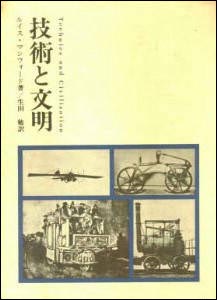
◆LEARNING & CREATIVITY (Learning · Creation)
·Ten:Volume developmental psychology: J. Piaget, B. Inherder, Jean Piaget, Barbel Inhelder, Takehisa Takizawa, Hiroshi Ginbayashi

Based on the idea of modern mathematics and contemporary science, a masterpiece that elucidated the problem of quantification of quality by closely and empirically analyzing the formation process of infant's concept of quantity.
·11:To Understand Is to Invent: Jean Piaget

·12:Process of education: JS Bruner, Shozo Suzuki, Saburo Sato
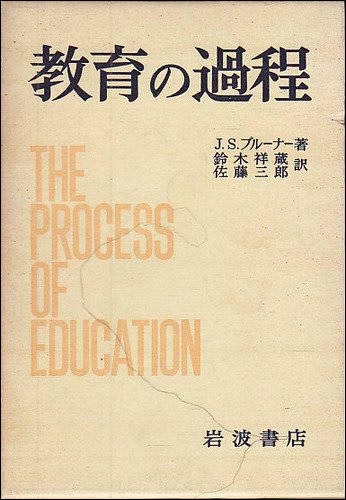
In a report summarizing the contents by Booner who served as chairman at Woods Hall meeting opened on the trigger of Sputnik · Shock, he advocated a learning teaching method called "discovery learning".
·13:The Relevance of Education (Norton Library): Jerome S. Bruner

·14:New Child Psychology (Bunko juice 461): Jean Piaget, Berber Inellyde, Kanji Hatano

Child psychology observes the mental growth of the child from birth to adolescence and associates it with the physiological study, while seeing whether the formation of the mental function is innate or acquired Elucidate. Piaget gradually states how children learn basic abilities as adults, centering on the formation of perception and judgment.

·16:The Psychology of Art: Lev S. Vygotsky

·17:Lateral Thinking: Creativity Step by Step (Perennial Library): Edward De Bono

·18:Dr. Debono's "six color hat" idea method: E. Debono, Matsuhiro Matsumoto

A new idea developed by Dr. Debono, famous for "horizontal thinking". Currently, among the leading companies in the West, it is the most noteworthy new thinking method. A unique way of thinking that you can switch, simplify, and integrate thinking by wearing six hats (hats) to escape from nonproductive thinking. From product planning to operation of the conference, it can be applied to various fields of business widely
.
·19:Essays into Literacy: Selected Papers and Some Afterthoughts: Frank Smith

·20:Instead of Education: John Caldwell Holt

·twenty one:Why are you going to school - American Home Schooling Movement (1984): John Holt, Yasumi Onuma

·twenty two:Mind Games: Mental Fitness for Tennis: Jason Whitmore, John Whitmore

·twenty three:The talent to live in love is not born (Kodansha Contemporary Newspaper 86): Suzuki Takehito

Education that does not give off the child who falls away - "Ah! Japanese children talking Japanese!" I was surprised to jump. Every child speaks Japanese freely. I speak without any bitterness. This is by a perfect educational method. There are teaching laws throughout Japan in which Japanese children grow. Ever since, I believe that all children grow well, I call it "talented education", and I will continue the educational movement which does not give off the child who falls. I want to do is early childhood education. I would like to teach small children with my new way of thinking and method. It is not an education to create a genius. How to extend the talent of children through the violin. - I will try to speak concisely and as fun as possible with hope for the future, looking back on the past. - From this document
·twenty four:Infant's secret: Marya · Montessori, Kuroshi
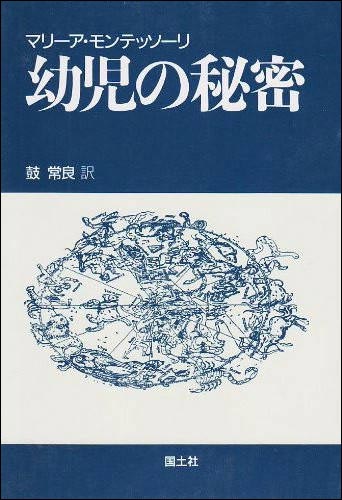
Tell the essence of Montessori Education that induced enthusiastic exercise in various countries around the world. It is a must read for those involved in early childhood education.
·twenty five:Child's discovery: Marya · Montessori, Kuroshi Tauru

I will send the world's first edition of the century that has greatly influenced all over the world in the field of early childhood education, psychology, pedagogy, and has established its results, to the world with Japanese translation for the first time.

A world of "logo" language that Dr. Papert, the creator of "logo" speaks. How computers help people to create relationships with new knowledge. Tell computer, future and education.
·27:The Children's Machine: Rethinking School In The Age Of The Computer: Seymour Papert

·28:School and society (Iwanami Bunko): Dewey, John Dewey, Seiichi Miyahara
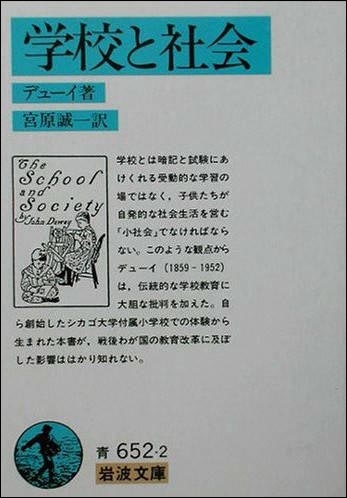
School is not a passive learning place open to memorization and examination but a "small society" in which children run voluntary social life. From this point of view, Dewey (1859-1952) added bold criticisms to traditional school education. The influence that this book born from the experiences of Chicago University attached elementary school which he founded on the educational reform of our country after war is immense.
·29:Freedom and Culture (1951) (New Culture Selection <6>): John Dewey, Takeo Hosono


·31:Ghost in Machine: Arthur Kostler, Arthur Koestler, Takashi Hidaka, Takashi Nagano
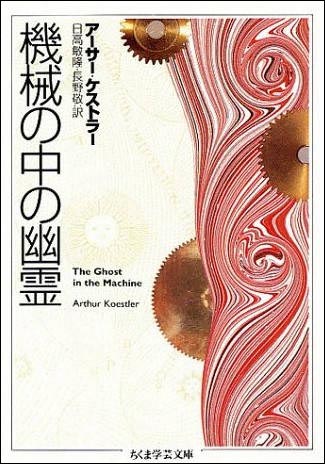
The phenomenon of all living things, human beings and their society has a duality that it is "part" from the upper level and "whole" at the lower level at the same time. Kestra named it "holon". Now when you look at the human beings, why is the hierarchical order consisting of various levels of "holons" unstable and accompanied by defects? Is not it due to evolution? In this way, human creativity and pathology can be unraveled from the root, which can not be caught by the reductionism of orthodox evolutionary theory which reduces everything to parts. In addition to psychology, biology, evolution theory, medical certificate of modern crisis, based on abundant knowledge of humanities and natural sciences.
◆ANTHROPOLOGY & PSYCHOLOGY (Anthropology / Psychology)
·32:Myth as a victim of life (Campbell selection): Joseph Campbell, Joseph Campbell, Shigeo Tobita, Ramen Basho, Nanako Furukawa

Introductory book of myths to tell the human race who has lost the pillar of mythology. Myths beyond 1 o'clock 2 Myths as living vanities 3 When the wild goes to the field 3 Mythical giants tell intelligently and humorally.
·33:God Mask
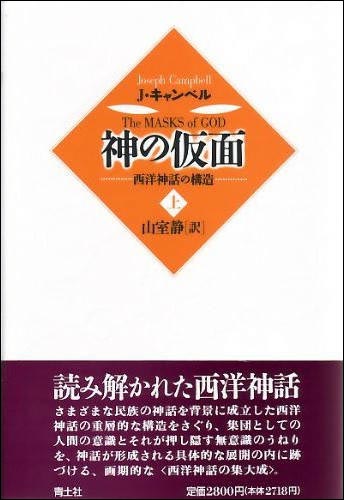
It traces the layered structure of Western myths established against the background of various ethnic myths and traces the consciousness of the human being as a group and the unconscious swell that it obscures within the concrete development in which the myth is formed, Culmination of revolutionary Western myths.
·34:Theory of language evolution: Derek Viccarton, Derek Bickerton, Toshio Akio
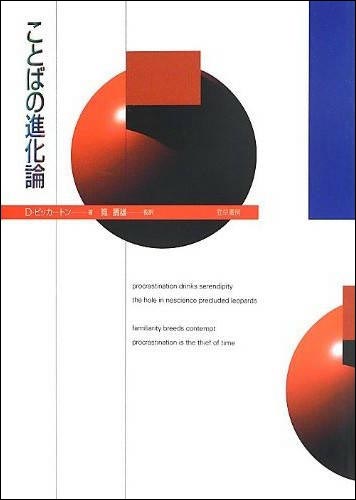
How was the language acquired? Frogs, chimpanzees, and human display systems are different? A grand trial approaching the essence and structure of words from the viewpoint of evolution.
·35:Psychology of Literacy: Sylvia Scribner, Michael Cole

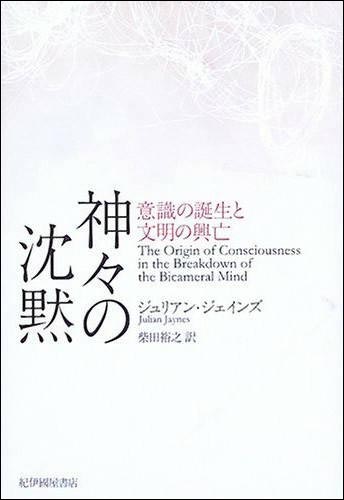
Until 3000 years ago, human beings did not have "consciousness"! Ancient civilization is a creation of owner of "dichotomy" before consciousness. From the analysis of abundant literature and ancient ruins, we propose a grand hypothesis about the birth of consciousness.
·37:How to Read / Write Culture (Iwanami Document Selection): Clifford G. Arts, Koriji Morizumi

For anthropologists who want to write ethnographic magazines based on fieldwork, what is "writing" acts? How did they relate to ethnic groups and cultures around the world and how did they describe it? The author, known for the theory of "theater nation" etc., critically examines the main works of Levi Stoles, Marinovsky, Ruth Benedict and others and clarifies the essence and problems of cultural anthropology.
·38:Beyond Boredom and Anxiety: Experiencing Flow in Work and Play: Mihaly Csikszentmihalyi PhD

·39:Flow Experience Introductory - Psychology of Fun and Creation: M. Chikusentemihay, Omori Hiroshi

Life changes in a flow experience. I can really enjoy my work, housekeeping and study. What is important was not "what to do" but "how to do it". A book of positive and practical research for a fulfilling life.
·40:New World New Mind: Moving Toward Conscious Evolution: Robert E. Ornstein, Paul Ehrlich


·42:Human beings and symbolic first volume - unconscious worlds: Carl Gustav Jung, Kawai Hayao
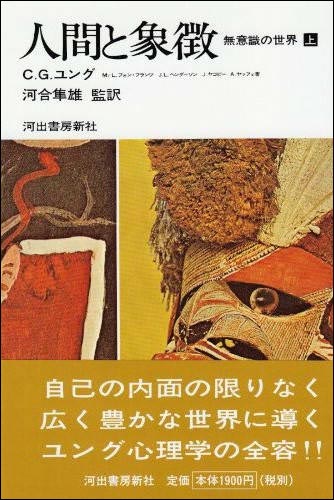
The whole body of Jung psychology leading to a world that is as broad and rich as possible inside self! It is!

·44:Society of the mind: Marvin Minsky, Marvin Minsky, Yuichiro Anzai
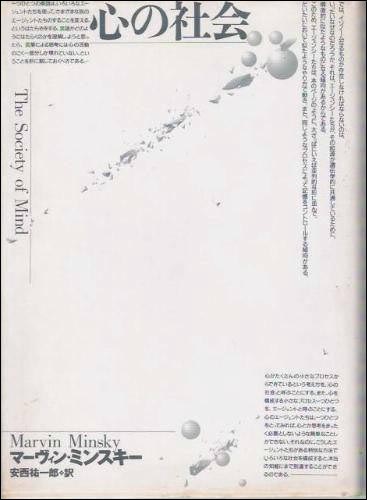
How does the mind work? The "society of the mind" gives a revolutionary response to this problem that has been questioned from long ago. This book shows a new way of thinking about human intelligence that Professor Minsky has devoted to for a long time. Professor Minsky presents the mind as "a society formed by gathering small agents who do not have one 's heart." The contents of this book range from children 's paintings to self consciousness, or from the power of thinking that denies something, to the role of humor in daily thought. Also, many easy-to-understand diagrams are inserted, and you can read it as an adventure story to the so-called world of mind, as if you directly express the imagination of the reader.
·45:Archetypes: Anthony Stevens

◆PHILOSOPHY (philosophy)
·46:Plato's Timaeus (Focus Philosophical Library): Plato, Peter Kalkavage

·47:State

Socrates was executed in the name of the state. Plato (427 - before 347) came to think that not only human beings' way of existence but also the state itself must be questioned in principle in realizing the justice of righteousness the teacher continued to preach. What is presented at the end of pursuing this task was nothing but the philosophy of the philosopher who constitutes the central thesis of this book. The highest peak in Plato Dialogue.
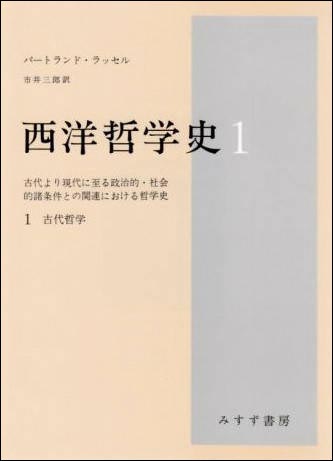
Bertrand Russell's "History of Western philosophy" is a valuable book. I do not know the word about how wonderful freshness and originality in this great philosopher Russell, in other words, how to sacrifice it for the distant past and the sharpness of empathy for the extraordinary spirit of the past. Hyundai - It is happiness that even in this dry, savage age, it is also wisdom, trustworthy, thorough, and it can show that there are human beings full of Humer is there. This book transcends much of the fighting of partisans and views and is educational in the deepest sense. A. Einstein (1946)
·49:Human Knowledge: Its Scope and Limits: Bertrand Russell

·50:Sceptical Essays (Routledge Classics): Bertrand Russell

·51:Passion of the Western Mind: Richard Tarnas

·52:The Ascent of Man: Jacob Bronowski

·53:Wisdom, Information and Wonder: What is Knowledge For ??: Mary Midgley

·54:Science As Salvation: A Modern Myth and Its Meaning (Gifford Lectures; 1990): Mary Midgley

·55:Human condition (Chikuma Gakugei): Hannah Arendt, Hannah Arendt, Shimizu Shimizu
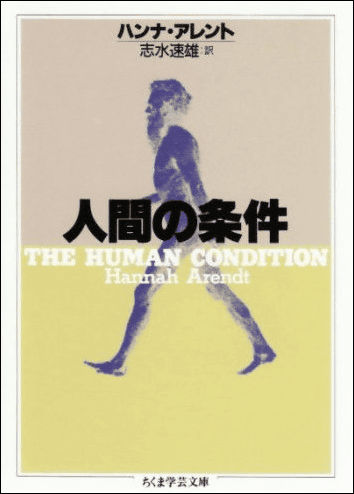
The intrinsic ability that a conditioned person works on the environment, that is, the activity power which becomes the most basic element of "human condition" can be considered from the three aspects of "labor" "work" "activity" Looks like. However, under the superiority of "labor", the modern world crisis was prepared after modern times when "work" "activity" lost its human meaning. The transformation of these "human conditions" will bring about the loss of the "public domain" originating in the Greek police far away and the control of the "private domain" which has become enlarged to the scale of the nation state. This book is one of the main articles of Arent, which clarified the philosophical genealogy of the popular society which became the real foundation of totalitarianism.

·57:Endless Frontier: Vannevar Bush, Engineer of the American Century: G. Pascal Zachary

·58:What I Believe: 13 Eminent People of Our Time Argue for Their Philosophy of Life: Mark Booth


·60:Lao Tzu (Iwanami Bunko): Lao Tzu, Kunio Hachiya

It is a kind of governance theory that is the wisdom of the prostitution surviving the fierce warring States era, but at the same time, it has the universality to be called the textbook of life by the deep insight about the world and human beings. The peaceful, self-sufficiency, rustic way that is discussed here appeals to people's mind beyond the times.
·61:Zen Mind Beginners · Mind (Sanga Shimbun): Toshitaka Suzuki, Taro Matsunaga
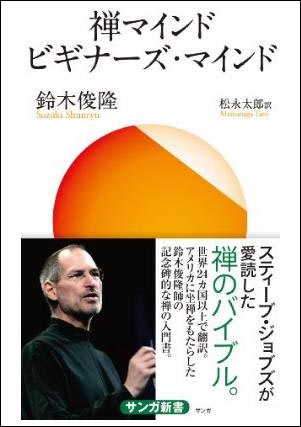
Since its publication in the United States in 1970, the introduction to Zen being read all over the world. Author Toshitaka Suzuki went to the United States in 1959, founded the San Francisco Zen Center. During the 12 years of traveling to the United States laid the foundation of Zen in the United States. Allen Ginsberg and Gary Snyder attracted the beatniks, and in the 1960s, a lot of young people meditated under the aged man Toshinori, in the middle of counterculture. Steve Jobs who will later find Apple will just encounter this book as a child of such a movement and will enter the path of Zen.
◆ART & PERCEPTION (art · sensibility)
·62:Art and Civilization (Series: Universe Times): Kenneth Clark, Kenneth Clark, Toru Kono

An immortal masterpiece depicting human creative acts and evolution of the era of spirit.
·63:What is a masterpiece (Hakusui Art Collection): Kenneth Clark, Yoshiyuki Fujikawa

I will consider about 40 pieces of works from the Renaissance to the present age and consider what the criteria of "masterpiece" is. The commentary reflecting the long years of great art historian's rich art experience, knowledge, and humanism as a keynote based on humanism is attractive, persuasive and the most trustworthy guide to the Painting Appreciation Law is there.


Are you seeing with your eyes, are you watching in the brain? An introduction to visual psychology. Translation of the original edition 5th edition which greatly expanded the contents. An illusion, an important theme such as what the baby looks at, what to learn and how to learn.
·66:Visual Thinking - World of Creative Psychology (1974): Rudolph Arnheim, Seki Tsunemu

◆DESIGN (Design)
·67:Notes on synthesis of shapes / City is not a tree (SD selection): Christopher Alexander, Christopher Alexander, Takeshi Inaba, Kunihide Oshino Kenji

In pursuit of a process that aims to create architecture, urban order and beauty awareness, the principle which led to the "pattern language" eventually. Building a design theory using mathematical method, we proposed two earlier studies of Alexander, who proposed a contradictory structure of tree and semilatis and gave a historical shock. "City is not a tree" is a long-awaited tutorial.
·68:The way of construction beyond time: Christopher Alexander, Christopher Alexander, Hirata Minasa
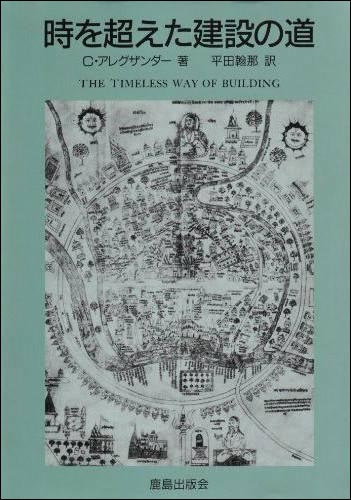
Describing a completely new approach to architecture and planning, a book showing the core of the author's design theory, the environment theory and the world view, which I gained through the idea of pattern language.
·69:GOSSAMER ODYSSEY: Morton Grosser, Paul MacCready

·70:Vehicles: Experiments in Synthetic Psychology: Valentino Braitenberg
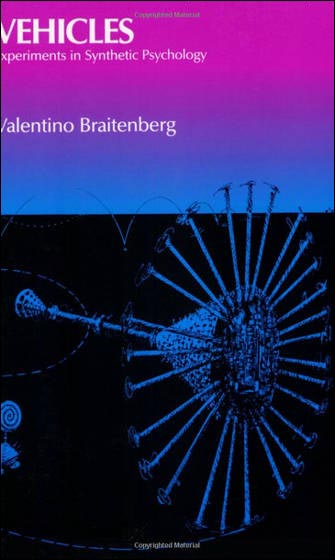
·71:The living brain (1959): WG Walter, Katsuaki Susuda, Koji Insozona

·72:The Visual Display of Quantitative Information: Edward R. Tufte

·73:Envisioning Information: Edward R. Tufte

◆ SCIENCE (Science)
·74:The Machinery of Life: David S. Goodsell

·75:The Ring of Truth: Philip Morrison


·77:Relativity Visualized: Lewis C. Epstein

·78:Creating machine - Nanotechnology: K. Eric Drexler, K. Eric Drexler, Masao Aizawa

Nanotechnology ... It is a new technology where nano (1 / billionth of a meter) world size can be spread. A marvelous science that realizes elderly longevity and resolves energy problems.
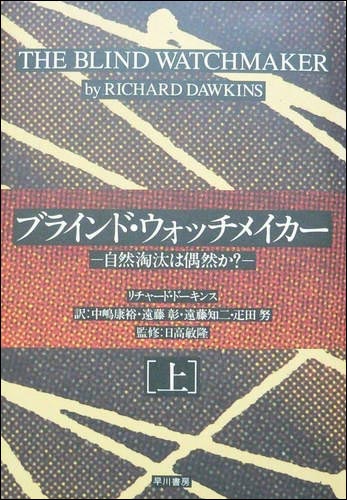
I want to stimulate the reader in a view that our existence itself is a mystery like a thrilling thing just thinking .... The theoretical arrival point of Darwinian evolution theory indicated by the author of the bestseller "Selfish Gene".
·80:Neuroethology: An Introduction to the Neurophysiological Fundamentals of Behavior: J.-P Ewert

·81:The Character of Physical Law (Modern Library): Richard P. Feynman, James Gleick


"Hey, Richard, what are you studying?" My friend's wife asked. Well, what do you do, Feynman. Can someone who does not understand physics at all understand his research? It also quantum electromagnetics which sounds quite superfluous. A good favorite inviting to the mysterious world where light and electrons burn. Physicist Richard Feynman, a story of exciting drama is clear.
·83:Ultimate elementary particle God created
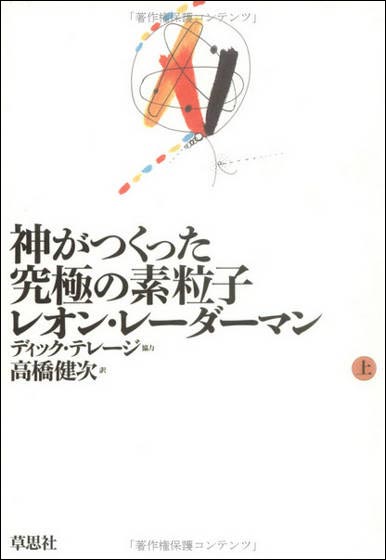
Giant accelerator reproduces the original universe, the secret of space creation finally revealed? Nobel laureate Experimental physicist writes outfully the excitement of the experiment site that challenges the magnificent mystery.
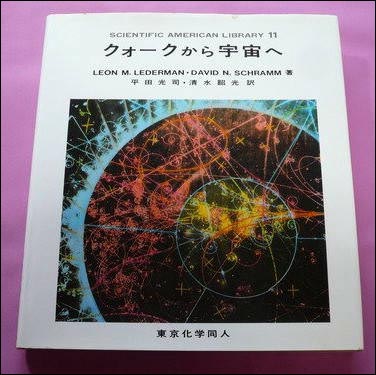
A story about something unimaginably small and too big to imagine. A story about the scientific breakthrough in the 20th century, the exploration of the inner space and the outer space of atoms, the creation and the end of the universe, the ultimate physical law. Books that understand and adventure the universe.
·85:Duplex (Kodansha Bunko): James · D · Watson, Keiko Nakamura, Fujio Egami

How did you discover the DNA model that is key to life? The elucidation of the structure of DNA, the fundamental substance of heredity, was the biggest event in the scientific community of this century. Dr. Watson, who won the Nobel Prize later on this achievement, touched the process of elucidating the structure of DNA realistically.
◆POLITICAL (politics)
·86:AN American Primer (Plume): Daniel J. Boorstin

·87:The Americans: The National Experience (Vintage): Daniel J. Boorstin

·88:The Federalist Papers: Alexander Hamilton, James Madison, John Jay

·89:The Debates in the Federal Convention of 1787: James Madison


·91:Common sense other three (Iwanami Bunko White 106-1): Thomas Pain, Haruo Komatsu
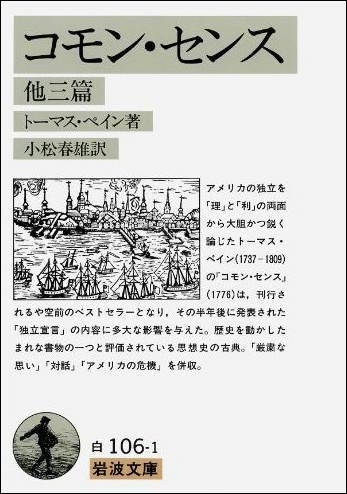
"Common sense" (1776) of Thomas Payne (1737-1809) who boldly and sharply discussed the independence of the United States from both "reason" and "interest" becomes the best selling unprecedented as it is published, and six months later It had a great influence on the contents of the announced "Declaration of Independence". A classic of ideological history that is regarded as one of the rare books that moved history. "Solemn mind" "dialogue" "American crisis" together.
·92:Human Rights (Iwanami Bunka White 106-2): Thomas Payne, Nishikawa Masao

·93:Age of Reason: Thomas Payne, Ichiro Shibuya

·94:An Aristocracy of Everyone: The Politics of Education and the Future of America: Benjamin R. Barber

◆COMPUTERS (computer)
·95:Building Large Knowledge-Based Systems: Representation and Inference in the Cyc Project: Douglas B. Lenat, R. V. Guha
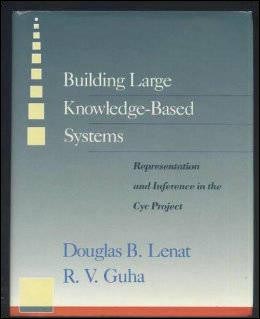
·96:: LISP 1.5 Programmer's Manual: John McCarthy

·97:Computation: Finite and Infinite Machines (Automatic Computation): Marvin Lee Minsky

·98:The Architecture Machine: Toward a More Human Environment: Nicholas Negroponte

·99:Soft Architecture Machines: Nicholas Negroponte

It's a "beginner list", but it is a pity that many books do not have a Japanese version ....
Related Posts:
in Note, Posted by darkhorse_log







